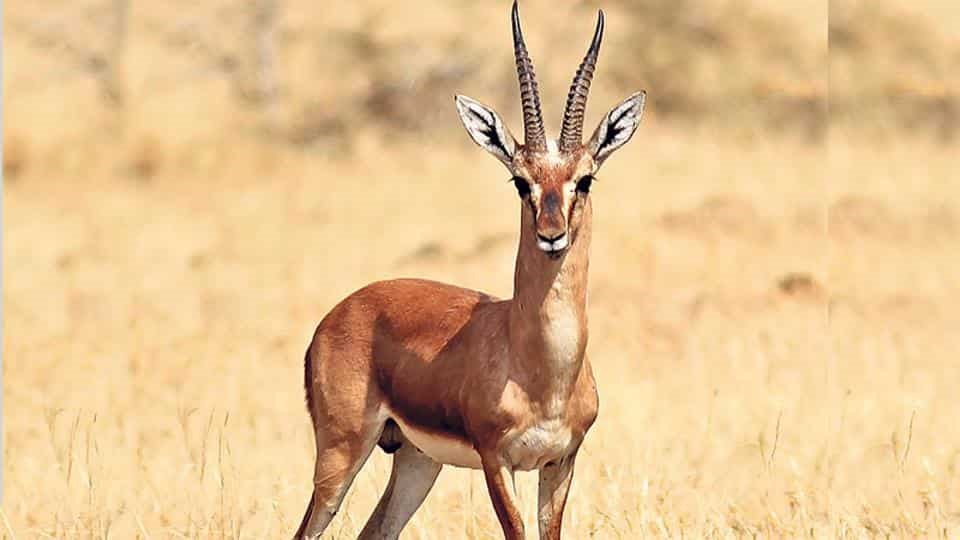Why in news?
- The instances of poaching of wild animals and birds, including the endangered chinkara or Indian gazelle, have registered a sharp increase across Rajasthan during the COVID-19 lockdown, with the hunters taking advantage of slack monitoring and sparse public movement in the remote areas.
- Armed poachers have been moving inside the national parks and wildlife sanctuaries since the lockdown was enforced. Besides killing chinkaras and blackbucks, the poachers have targeted peacocks, grey francolins and other birds covered under the Wildlife Protection Act, 1972, as endangered species.
- Several of the cases were detected and reported to the forest authorities by the members of the Bishnoi community, which is known for its beliefs associated with nature worship and wildlife conservation.
- The chinkaras are usually poached in Rajasthan, allegedly by the Bawaria community, whose traditional occupation is hunting.
Chinkara, Indian Gazelle

- The chinkara (Gazella bennettii), also known as the Indian gazelle, is a gazelle species native to Iran, Afghanistan, Pakistan and India.
- Chinkara live in arid plains and hills, deserts, dry scrub and light forests. They inhabit more than 80 protected areas in India.
- The chinkara is threatened by extensive hunting for meat and trophies in Afghanistan, Iran and Pakistan. Other threats include habitat loss due to agricultural and industrial expansion.
- IUCN Conservation Status: Least Concern
Blackbuck

- The blackbuck (Antilope cervicapra), also known as the Indian antelope, is an antelope found in India, Nepal, and Pakistan.
- The blackbuck is the sole extant member of the genus Antilope.
- Blackbucks are native to the Indian subcontinent, but extinct in Bangladesh.
- Blackbucks inhabit grassy plains and thinly forested areas where perennial water sources are available for its daily need to drink, they travel long distances for water.
- During the 20th century, blackbuck numbers declined sharply due to excessive hunting, deforestation and habitat degradation.
- The blackbuck is listed under Appendix III of CITES.
- In India, hunting of blackbuck is prohibited under Schedule I of the Wildlife Protection Act of 1972.
- IUCN Conservation Status: Least Concern
Grey Francolin

- The grey francolin (Francolinus pondicerianus) is a species of francolin found in the plains and drier parts of the Indian subcontinent.
- They are found in open cultivated lands as well as scrub forest and their local name of teetar.
- The distribution is south of the foothills of the Himalayas westwards to the Indus Valley and eastwards to Bengal.
- It is also found in north-western Sri Lanka. Introduced populations are found in the Andaman and Chagos Islands.
- IUCN Conservation Status: Least Concern



